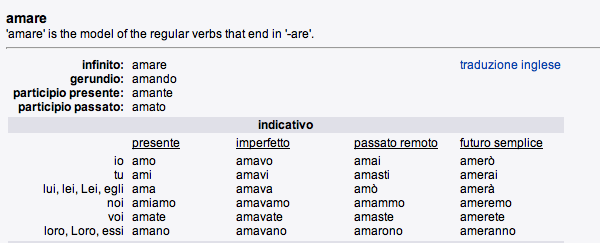OUR NEW NAME AND ADDRESS IS VIA OPTIMAE! {www.viaoptimae.com}
Didattichiamo! will slowly be phased out, so read this post on our new site and subscribe by email to receive our latest updates.
Today, we're going to look at the Simple Present Tense and in particular, -ERE verbs:
In case you missed the previous posts in this series, start there first: UPDATE: all links redirect to the same posts on the new site, Via Optimae
(1) How Italian verbs work, (Intro to verbs & grammar terms)
(2) Italian present tense: -ARE verbs
(1) How Italian verbs work, (Intro to verbs & grammar terms)
(2) Italian present tense: -ARE verbs
Today, we're going to look at the Simple Present Tense and in particular, -ERE verbs:
To conjugate -ERE verbs in the simple present tense, just drop the -ERE from the infinitive form, and add one of the following endings:
So, if I wanted to conjugate the regular verb: 'credere' (to believe) in the first person singular or 'io' it would look like this:
Credo
I believe
Credo nei miracoli.
I believe in miracles.
+
-Credi nei miracoli?
Do you believe in miracles?
-Sì, credo nei miracoli.
Yes, I believe in miracles.
-Credono nei miracoli?
Do they believe in miracles?
-No, non credono nei miracoli.
No, they don't believe in miracles.
Using the above examples as clues, how would you say: "We believe in miracles." ? ("We" is "noi", review subject pronouns if needed in: How Italian Verbs Work— redirects to same post on the new site, Via Optimae)
[Highlight below to reveal answer]
Crediamo nei miracoli.
Here are some other regular -ERE verbs:
prendere - to take
scrivere - to write
vivere - to live
Can you write out the present tense conjugations for each?
↓
~
I recommend writing them out in a two column, three row table format so that you can refer back to them easily… You can also use one of the following free printable PDFs… Choose either blank or with a quick summary:
UPDATE: All links (including those for the worksheets) redirect you to this post on the new site, Via Optimae
 |
| Blank conjugation tables (Blank so you can use them to practice any tense conjugation) |
-or-
 |
| Italian simple present tense -ERE Summary and tables (A summary of this lesson next to blank tables to help you practice.) |
~
You can verify your answers or look up the conjugation for any verb/tense in Word Reference's handy conjugator:
. . . |
| The simple present tense is the first column of the first row labeled "presente." |
~
A note on consonant sound changes
In Italian present tense: -ARE verbs we talked about how the letter /h/ is added to certain conjugations so that the verb maintains its original consonant sound in all the forms.
-ERE verbs are a bit different, and seem to like consonant sound changes. So if you're conjugating and find that when you add the new ending, the consonant changes, it's probably correct as is.
This change in consonant sound occurs in verbs with stems that end in the "g" or "c." Let's look at some examples:
leggere /ˈlɛddʒere/
to read
In the infinitive, the g's are followed by the letter /e/ which means you pronounce it "soft" (like the /j/ in the English "jester").
When you conjugate it into the 1st person, you add an "o" and that changes the sound of the /g/ from "soft" to "hard" (like the /g/ in the English "go".)
For -ERE verbs, this consonant sound change is okay! Let's look at all the forms of "leggere"
 |
| The consonant sounds are different (like /g/ in English "go") for the "io" and "loro" forms. |
conoscere /koˈnoʃʃere/
to know, be familiar with
In the infinitive, the /sc/ is followed by an /e/ which means you pronounce it "soft", like the "sh" in the English "share".
When you conjugate it into the 1st person, you add an "o" and that changes the sound of the /sc/ from "soft" to "hard", it becomes like the "sk" in the English "ski".
Again, the consonant sound change happens in both the "io" and the "loro" forms:
As you can see, 'leggere' and 'conoscere' are both conjugated completely regularly. You don't need to worry about any spelling changes for them.
Full pronunciation of all present tense forms of "leggere" and "conoscere" available through RhinoSpike (Special thanks to native speaker Gabriella for doing the recording!)
That's it for now on -ERE verbs... keep practicing your conjugation until it becomes natural to you! (You can use the words in the image at the beginning of the post– they're all regular!)
Happy Conjugating!
-Alex
Want more conjugation practice?
Try this free online -ERE verb conjugation exercise:
Try this free online -ERE verb conjugation exercise:
Ready to move on to the next lesson in this series?
TRY: Italian Present Tense: -IRE verbs (UPDATE: redirects to the same post on the new site, Via Optimae)












No comments :
Post a Comment